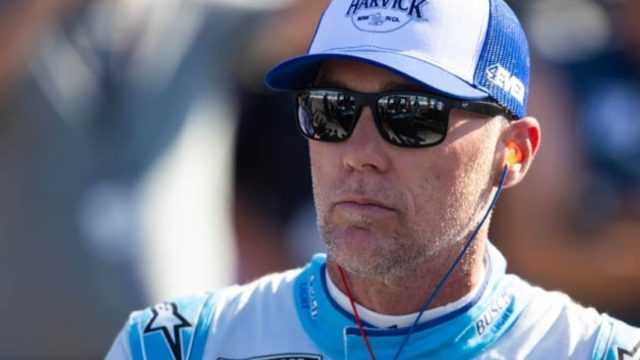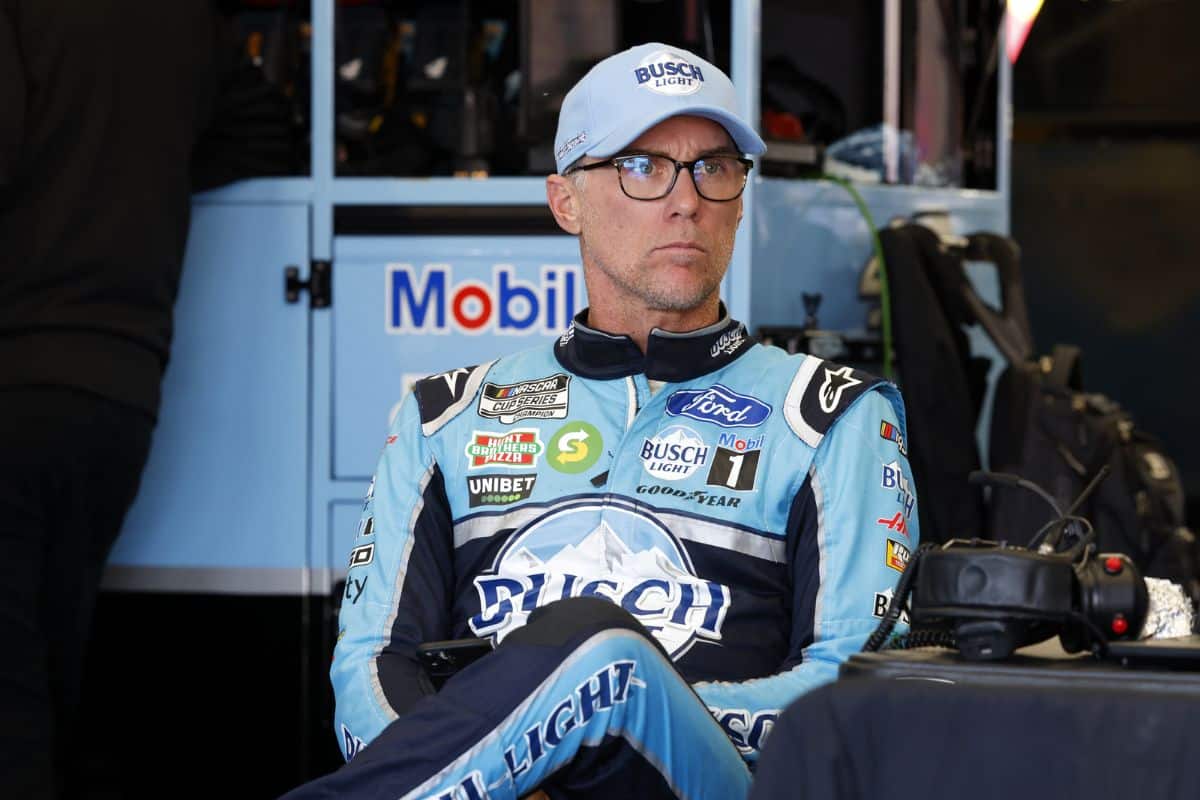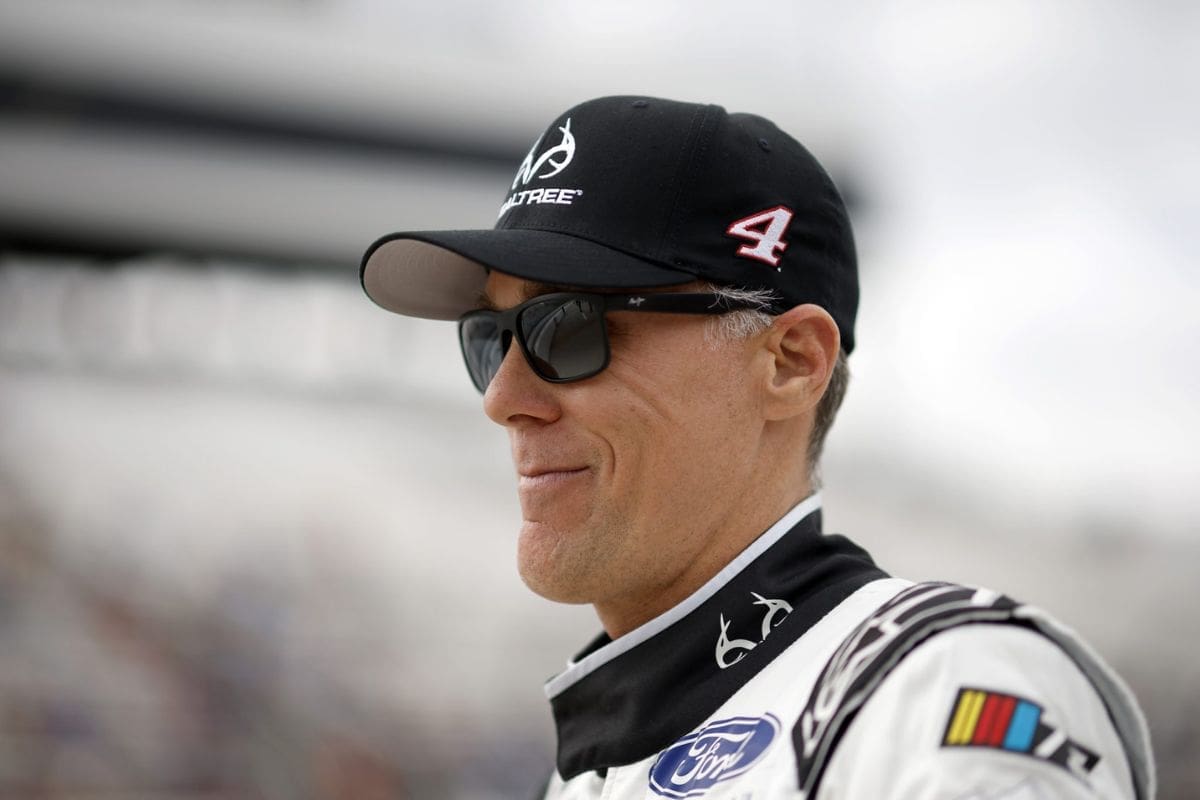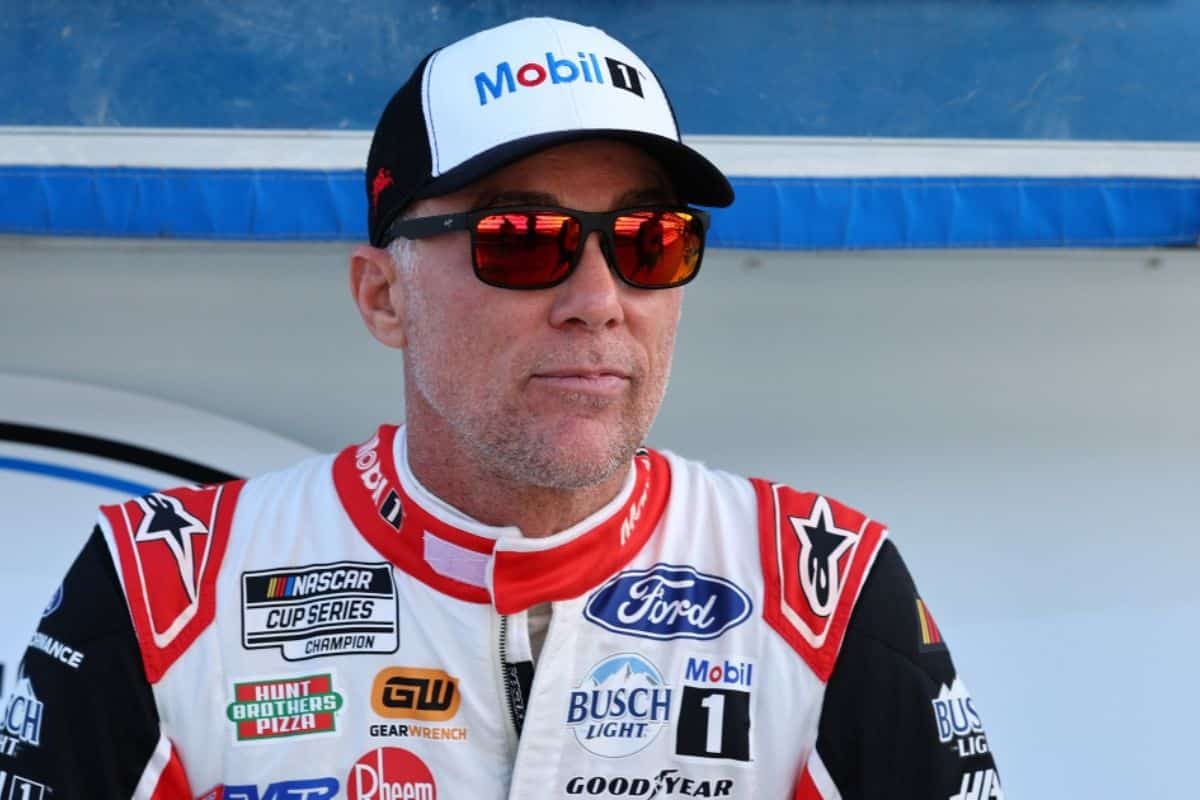Kevin Harvick Condemns NASCAR’s Wet Tire Chaos: Kevin Harvick‘s recent outburst concerning NASCAR’s handling of wet tire strategy has ignited a significant debate within the racing community, shining a light on the broader issues of race management and safety. Harvick’s pointed critique highlights the tension between the governing body’s decisions and the drivers’ need for autonomy, particularly when going through hazardous conditions. His remarks emphasize a growing concern over NASCAR’s approach to wet races, highlighting the potential safety risks and the impact on team strategy.
Key Highlights
- Kevin Harvick criticizes NASCAR’s micromanagement and lack of autonomy for teams in tire strategy decisions.
- Harvick highlights the challenges and risks of using wet tires hastily without adequate preparation.
- He stresses the neglect of pit road safety during wet conditions, increasing danger for pit crews.
- Harvick calls for prioritizing crew safety and effective wet tire management to ensure race integrity.
- Denny Hamlin supports Harvick, emphasizing the need for a dry pit lane to minimize accidents and ensure smooth race operations.
NASCAR’s Unconventional Approach to the New Hampshire Race
NASCAR’s approach to the New Hampshire race was marked by an unorthodox strategy that included halting the race for two hours and subsequently restarting it with wet tires, a decision that sparked significant debate among fans and industry veterans as well. The unconventional strategy sought to address the challenge posed by inclement weather, with NASCAR opting to wait for the rain to subside before drying the track and deploying wet tires.
This decision was not without controversy. The wet tire controversy centered on NASCAR’s lack of autonomy granted to teams regarding tire strategy. Teams were allowed to refuel during the stoppage, raising eyebrows and criticism from traditionalists and experienced individuals, who viewed this as a deviation from standard protocols. Kevin Harvick’s criticism highlighted the broader sentiment, questioning NASCAR’s risky decision and emphasizing the potential track safety concerns that were overlooked.
Kevin Harvick Schools NASCAR
Kevin Harvick, a seasoned veteran in the sport, has voiced strong criticism against NASCAR’s handling of the wet tire strategy, arguing that the organization’s interference has stifled the inherent excitement and strategic depth of the race. Harvick’s criticism centers on the assertion that NASCAR’s micromanagement of wet tire usage detracts from the dynamic nature of race strategy, reducing the opportunities for teams to make bold, competitive decisions.
- Driver frustration: Many drivers share Harvick’s sentiment that NASCAR’s involvement limits their ability to demonstrate skill and adaptability.
- Wet tire challenges: The introduction of wet tires is a significant development, but their effective use requires a delicate balance between regulation and freedom.
- NASCAR’s response: The organization’s cautious approach, while intended to ensure safety and fairness, may accidentally hinder the thrill of competition.
- Race strategy: Allowing teams more autonomy in deciding when to switch to wet tires could enrich the strategic complexity and viewer engagement.
In his podcast ‘Happy Hour,’ Harvick emphasized the need for NASCAR to step back and permit more original race strategies, arguing that such changes would ultimately benefit the sport by making it more captivating and unpredictable.
“There is way too much low-hanging fruit right here with the rain tires and strategy and everything that we have to make this so interesting that everybody wants to watch.” – (harvick)
Harvick’s Concerns on Safety and Pit Road
In the midst of the intricacies of wet tire management, Harvick emphasizes an essential safety concern regarding the frequently overlooked condition of the pit road. While NASCAR’s efforts to manage wet tire usage and guarantee race continuity are praiseworthy, Harvick’s observations bring to light the neglected aspect of pit safety, particularly the hazardous state of the pit road during wet conditions.
Harvick argues that the focus on drying the race course often leaves the pit road in a perilous state. This neglect poses a significant risk to crew members, who are vulnerable when cars slide on the slick surface. The potential for accidents increases, endangering those tasked with tire changes and refueling. Harvick suggests that maintaining crew protection should be paramount, demanding for the crew to remain behind the wall until cars come to a complete stop in their pit boxes.
This proposal highlights the delicate balance between wet tire management and strategic racing, where driver concerns about safety must not be overshadowed by the excitement of the sport. By addressing these safety issues, NASCAR can ensure a more secure environment for both drivers and pit crews, enhancing the overall integrity of the race.
Denny Hamlin Agrees with Kevin Harvick
Denny Hamlin, echoing the sentiments of fellow driver Kevin Harvick, has called for NASCAR to prioritize the drying of the pit lane to improve safety and strategic race conditions. Hamlin, a prominent figure within Joe Gibbs Racing, voiced his concerns following a race where wet tires and a slippery pit lane posed significant risks to drivers. He argued that ensuring the pit lane is dry should be NASCAR’s primary focus, as it directly impacts both safety and race strategy.
Hamlin elaborated on the importance of this issue during a podcast, where he highlighted the dual benefits of a dry pit lane.
“If pit road is not safe, that’s why we had non-competitive pit stops, then you shouldn’t restart the race until pit road is safe. Do whatever drying you need to do to pit lane and make that safe. Maybe that should be the priority when they go back to drying the facility.” – (hamlin)
- Enhanced driver safety: A dry pit lane minimizes the risk of accidents during pit stops, which are critical moments in any race.
- Strategic opportunities: Drying the pit lane at the outset allows teams to switch to dry tires sooner, potentially gaining a competitive edge.
- Race restart safety: Ensuring pit lane conditions are at their best before restarting a race can prevent unnecessary incidents.
- Operational consistency: Prioritizing pit lane drying establishes a clear protocol for race operations under wet conditions.
Future of Wet Weather Racing and NASCAR’s Transition
The future of wet weather racing in NASCAR is assured to undergo significant changes as the organization gets ready to shift the responsibility of tire management to individual teams. This shift process is driven by the need to safeguard wet weather challenges while enhancing the general safety precautions for drivers.
Elton Sawyer, representing NASCAR, has emphasized that this tire handover will be executed ‘in the safest way possible.’ The move aims to reduce NASCAR’s direct involvement in tire management, thereby increasing team responsibility. This change necessitates a detailed and well-structured approach to ensure minimal disruption and maximum efficiency.
The handover will undeniably present new wet weather challenges, requiring teams to develop bespoke strategies and solutions. While the damp weather experiment has been largely successful, the responsibility will now be on the teams to maintain this momentum.
News in Brief: Kevin Harvick Condemns NASCAR’s Wet Tire Chaos
NASCAR’s New Hampshire race faced controversy due to an unconventional strategy involving a two-hour stoppage and wet tires, drawing criticism from drivers like Kevin Harvick and Denny Hamlin. Harvick argued NASCAR’s control over tire strategy reduced race excitement and raised safety concerns about the pit road’s condition.
Hamlin echoed the need for better pit lane drying for safety and strategy benefits. NASCAR plans to shift tire management responsibility to teams, aiming to enhance safety and strategic complexity, while ensuring a smooth transition to minimize disruptions.
ALSO READ: Kevin Harvick Reveals Broken Ribs Mishap to Comfort Joe Gibbs



